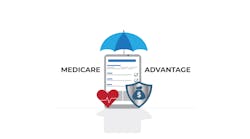One of the promises of health information exchange is better communication between hospitals and community healthcare providers about patients, including efforts to reduce emergency department utilization rates and ensure people are receiving care in the most appropriate setting.
To improve their information flow, hospitals in Washington state have turned to a solution called the Emergency Department Information Exchange (EDIE), a software tool for proactively notifying EDs when high-utilization or special needs patients register. The information includes those patients’ prior ED visit history, primary care provider information, and associated care plans.
The Washington State Health Care Authority reports that use of EDIE by hospital EDs has helped save the state a projected $31 million annually. The HCA also reports a 23 percent visit reduction in unnecessary ED visits by Medicaid patients with more than 5 visits in 12 months. Based on this early success in Washington, the Oregon Health Authority’s Office of Health IT has announced that 56 hospitals in the state have agreed to implement EDIE over the next year.
Kathleen Lipiec, social work director at 450-bed PeaceHealth Southwest Medical Center in Vancouver, Wash., described to me why her hospital started using EDIE in 2012.
The state was seeking to reduce inappropriate use of EDs by managed Medicaid patients, she said. The state was considering limiting payments, but hospitals and ED physicians asked the state for time to address the problem proactively, and the EDIE implementation began. It is used statewide, even in the smallest hospitals, Lipiec said.
“Essentially we load the data on managed Medicaid patients from the state and from our systems into EDIE. And we set parameters — for instance the fifth visit sends an alert in ED, and you can decide how you want it sent,” she explained. “We have a paper alert pop up as a fax and then inserted directly in their registration before the patient sees a doctor.” The ED physician can see the frequency of a patient’s ED visits and a summary of ED discharges for the past 12 months. It also allows any ER physician to see a patient’s care guidelines and their treatment plans. Also, the hospital’s social workers receive e-mail alerts about those patients.
“We can refer them back to primary care for things that are appropriate to handle there, such as pain management,” Lipiec said. “We have added VA patients and Medicare patients, and those without insurance yet.”
EDIE was developed by a Salt Lake City-based company called Collective Medical Technologies (CMT). I asked Chris Klomp, who heads up strategic development for CMT, to describe how it works in further detail. He answered a few questions via e-mail. Here are some of his responses:
Where did the idea originate for this solution?
One of CMT's co-founders’ mothers is a social worker. Many years ago, she worked alongside a group of ED physicians and nurses to track a high-utilization population of patients across several hospitals in Idaho in order to improve their care. After managing patients first with pen and paper, and then a simple spreadsheet, she eventually came to her son, Adam Green, to see if he could write a computer program that could better manage the patients. EDIE was born.
How does the EDIE gather data on patients and disseminate it? Once it is set up, does data flow to and from provider EMRs? Do providers get information on their patients in a secure e-mail?
For a hospital ED, Collective Medical sets up an interface with the hospital so that whenever a patient registers at their ED, the registration message is sent directly to CMT. From there, EDIE compares the registration message with the patient data in CMT’s database to determine if a patient has relevant prior visit history. If a match is made, EDIE compares the patient against a set of trigger criteria for notification—these criteria are typically ED mobility and visit frequency based—and then sends an EDIE Notification if the patient meets any of the criteria for the hospital.
The EDIE Notification can be sent in a variety of ways—via fax machine or network printer in the ED, secure e-mail to a specific EDIE user account set up by the hospital, automated phone call, text message prompt, or even directly to the hospital’s EMR. We only send email notifications to EDIE users that have been identified and approved by the hospital; these messages include only a link to the patient record and corresponding Notification in the EDIE web application. The user is then free to log in to his or her EDIE account to view the visit details. We can also enable a hospital to receive notifications directly in its EMR. As part of this type of integration, we can also provide a number of additional benefits such as adding an EDIE alert icon directly in the hospital’s ED tracker board.
This type of improved communication and care coordination sounds like what accountable care organizations are trying to do. Are you working with any of them?
We do work with ACOs and Coordinated Care Organizations. We view our product set as sharing an aligned objective with these organizations and as being highly complementary to the work they’re undertaking. We’re able to leverage technology to more efficiently bridge some of the communication gaps that plague the overall system; we can then provide this information to ACOs and CCOs who, in turn, can take the information and unite the patient and provider downstream in order to improve patient outcomes. We are also beginning to work with Health Home groups in Washington. EDIE provides a great platform for these types of groups in their communication with the EDs that their patients visit.

